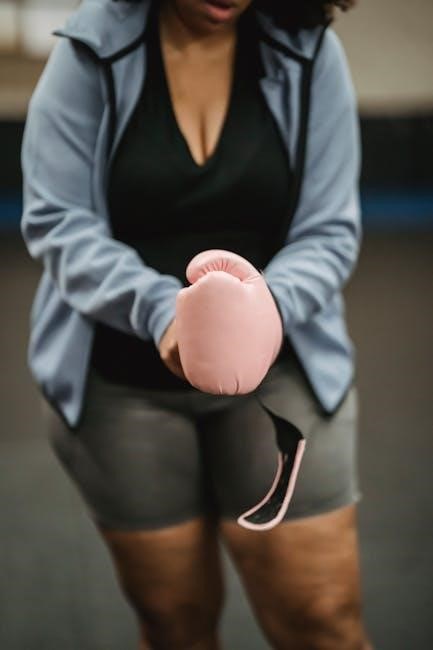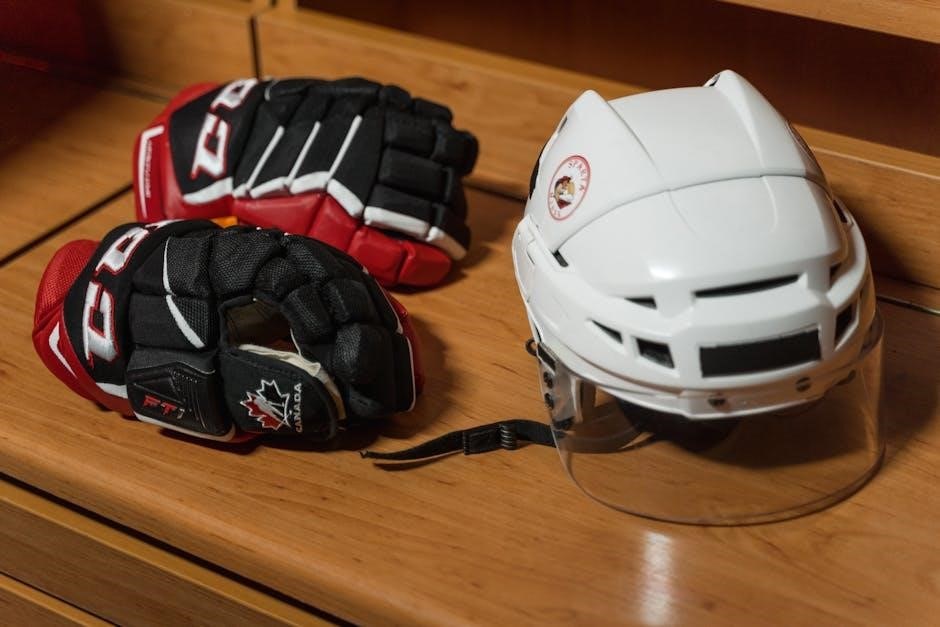Finding the right hockey glove size is crucial for comfort, protection, and performance. This guide provides comprehensive information to help you determine the appropriate size hockey gloves for your needs, ensuring a perfect fit every time you hit the ice.
Hockey gloves are a vital piece of equipment for any hockey player, offering essential protection for the hands and wrists. Proper sizing is paramount, not only for safety but also for optimal performance on the ice. Gloves that are too small can restrict movement and leave areas of the hand exposed to injury, while gloves that are too large can feel cumbersome and reduce dexterity. Understanding the intricacies of hockey glove sizing is therefore crucial for players of all levels, from beginners to seasoned professionals.
The sizing of hockey gloves is typically measured in inches, corresponding to the length from the fingertips to the elbow crease. However, sizing can vary slightly between manufacturers, making it important to consult specific sizing charts for each brand. Furthermore, personal preference plays a role in determining the ideal fit. Some players prefer a snug fit for maximum control, while others opt for a looser feel for greater freedom of movement. This guide will walk you through the process of accurately measuring your hand, interpreting sizing charts, and considering various fit preferences to ensure you select the perfect pair of hockey gloves.
Beyond simply selecting the correct size, it’s also important to understand the different types of hockey gloves available. Gloves come in various styles, including those with a tapered fit, a traditional fit, and a contoured fit. Each style offers a unique feel and level of mobility, catering to different playing styles and preferences. By understanding the nuances of hockey glove sizing and fit, you can make an informed decision and choose gloves that provide the optimal combination of protection, comfort, and performance, allowing you to focus on your game with confidence.
Ultimately, finding the right hockey glove size involves a combination of accurate measurement, understanding brand-specific sizing charts, and considering personal fit preferences. This guide aims to equip you with the knowledge and tools necessary to navigate the world of hockey glove sizing and select the perfect pair for your needs, ensuring you’re well-protected and ready to perform at your best on the ice. Remember that trying on gloves whenever possible is always recommended to get a true sense of the fit and feel before making a purchase.
Measuring Your Hand for Hockey Gloves
Accurately measuring your hand is the first and most critical step in determining the correct hockey glove size. This measurement serves as the foundation for selecting gloves that offer a comfortable and protective fit, allowing you to perform at your best on the ice. The standard method involves measuring the distance from the tip of your middle finger to the crease of your elbow. This length, typically expressed in inches, corresponds directly to the glove size. However, to ensure the most accurate measurement, it’s essential to follow a precise procedure and use the appropriate tools.

To begin, you’ll need a flexible measuring tape, such as a tailor’s tape measure. Extend your arm straight out in front of you, with your palm facing upwards. It’s helpful to have a friend or family member assist you with the measurement to ensure accuracy. Place the end of the measuring tape at the tip of your middle finger and extend it along the length of your arm to the crease of your elbow. Ensure the tape measure is snug but not too tight, following the natural contour of your arm. Record the measurement in inches, rounding up to the nearest whole number if necessary. This measurement represents your ideal hockey glove size.
While the middle finger to elbow crease measurement is the primary indicator of glove size, it’s also beneficial to consider the circumference of your hand. This measurement can help you determine if you need a wider or narrower glove, particularly if you have unusually large or small hands relative to your arm length. To measure your hand circumference, wrap the measuring tape around the widest part of your palm, just below your knuckles. Again, ensure the tape measure is snug but not too tight. Record this measurement in inches as well. This information can be useful when comparing sizing charts from different manufacturers, as some charts may include both length and circumference measurements.
Remember that consistency is key when measuring your hand. It’s best to take the measurement multiple times to ensure accuracy and to account for any slight variations. If you’re between sizes, it’s generally recommended to round up to the larger size. This allows for more freedom of movement and prevents the gloves from feeling too constricting. By following these guidelines and taking the time to accurately measure your hand, you can confidently select hockey gloves that provide the optimal fit, protection, and performance on the ice.
Hockey Glove Sizing Chart (General)
A general hockey glove sizing chart serves as a valuable reference tool for determining the appropriate glove size based on your hand measurement. While brand-specific charts offer more precise fitting information, a general chart provides a good starting point and can be particularly helpful when you’re unsure of your size or when comparing gloves from different manufacturers. These charts typically correlate the measurement from the tip of your middle finger to the crease of your elbow (in inches) with the corresponding glove size.
It’s important to understand that general sizing charts are not an exact science and should be used as a guideline rather than a definitive answer. Individual hand shapes and preferences can influence the ideal glove size. However, by consulting a general chart, you can narrow down your options and make a more informed decision when trying on gloves. A typical general sizing chart will include ranges for youth, junior, intermediate, and senior glove sizes.
Youth sizes typically range from 8 inches to 10 inches and are designed for younger players with smaller hands. Junior sizes typically range from 11 inches to 13 inches and are suitable for older children and teenagers. Intermediate sizes, ranging from 13 inches to 14 inches, bridge the gap between junior and senior sizes and are often a good fit for players with smaller adult hands. Senior sizes, ranging from 13 inches to 15 inches, are designed for adult players with larger hands. Keep in mind that these are just general guidelines, and individual measurements may vary.
When using a general sizing chart, locate your hand measurement in the chart and identify the corresponding glove size. If your measurement falls between two sizes, it’s generally recommended to round up to the larger size. This allows for more freedom of movement and ensures that the gloves aren’t too tight. It’s also important to consider your personal preferences when choosing a glove size. Some players prefer a snug fit for better control, while others prefer a looser fit for greater comfort. Ultimately, the best way to determine the correct glove size is to try on different sizes and brands to see what feels most comfortable and provides the best range of motion. Remember to consult brand-specific sizing charts for a more accurate fit.
Brand-Specific Hockey Glove Sizing (Bauer, CCM, Warrior, TRUE)
While general hockey glove sizing charts offer a baseline, brand-specific sizing charts are crucial for achieving the most accurate and comfortable fit. Different manufacturers, such as Bauer, CCM, Warrior, and TRUE, employ unique design philosophies and construction methods, leading to variations in sizing across their product lines. Relying solely on a general chart can result in selecting a glove that doesn’t fit optimally, impacting your performance and protection on the ice.

Each brand provides its own sizing chart, typically available on their website or at authorized retailers. These charts often take into account specific measurements, such as hand length (from the base of the palm to the tip of the middle finger) and, in some cases, hand circumference. By comparing your individual measurements to the brand’s chart, you can pinpoint the glove size that corresponds most closely to your hand dimensions. For instance, a player who wears a size 13 glove in Bauer might find that a size 14 provides a better fit in CCM due to differences in their sizing standards.
Bauer, a leading manufacturer of hockey equipment, is known for its anatomical fit gloves, which tend to be snugger and more responsive; CCM, another prominent brand, often offers gloves with a more traditional, roomier fit. Warrior gloves are recognized for their innovative technologies and focus on mobility, while TRUE gloves emphasize lightweight construction and enhanced feel. Understanding these brand-specific characteristics can further assist you in selecting the right glove. It’s also important to note that within each brand, different glove models may have slight variations in sizing. For example, a Bauer Vapor glove might fit differently than a Bauer Supreme glove, even if they are both labeled as the same size.
Therefore, consulting the specific sizing chart for the particular brand and model you’re interested in is highly recommended. If possible, visiting a local hockey equipment retailer and trying on gloves from different brands is the best way to ensure a proper fit. A knowledgeable sales associate can guide you through the sizing process and help you assess the comfort and range of motion of each glove. Remember, a well-fitting hockey glove should feel comfortable, allow for a full range of motion, and provide adequate protection without being too restrictive or loose. By paying attention to brand-specific sizing and seeking expert advice, you can confidently choose the right gloves to elevate your game.
Youth Hockey Glove Sizing
Selecting the correct size hockey gloves for young players is paramount for their safety, comfort, and development of proper technique. Youth hockey gloves are specifically designed to accommodate smaller hands and wrists, providing adequate protection without hindering mobility. Unlike senior gloves, youth sizes typically range from 8 inches to 12 inches, catering to players aged approximately 4 to 10 years old. However, age is not the sole determinant of glove size; hand measurements are crucial for ensuring a proper fit.
The most accurate method for determining youth hockey glove size involves measuring the distance from the base of the palm to the tip of the middle finger. Double this measurement to obtain the approximate glove size in inches. For instance, if the measurement is 5 inches, the recommended glove size would be 10 inches. It’s essential to consult brand-specific sizing charts, as variations may exist between manufacturers like Bauer, CCM, Warrior, and TRUE. These charts often provide more precise measurements and guidelines tailored to their respective glove designs.

When fitting youth hockey gloves, consider the following factors. The glove should fit snugly around the hand and fingers without being too tight or restrictive. There should be approximately a quarter-inch of space at the end of the fingers to allow for proper grip and dexterity. The cuff of the glove should extend far enough to overlap with the elbow pads, ensuring complete coverage and protection of the forearm; Avoid selecting gloves that are too large, as they can impede movement, reduce control, and increase the risk of injury. Conversely, gloves that are too small can restrict circulation and compromise protection.
As young players grow rapidly, it’s crucial to regularly check the fit of their hockey gloves; Gloves that fit well at the beginning of the season may become too small by the end, necessitating a replacement. Encourage young players to communicate any discomfort or limitations in movement they experience while wearing their gloves. Furthermore, consider the player’s position and playing style when selecting youth hockey gloves. For example, a defenseman might prefer gloves with more padding and protection, while a forward might prioritize gloves with greater flexibility and feel. By prioritizing proper sizing, comfort, and protection, you can ensure that young players have a positive and safe experience on the ice.
Senior Hockey Glove Sizing

Selecting the correct size of senior hockey gloves is crucial for optimal performance, protection, and comfort on the ice. Senior hockey gloves are designed for players typically aged 14 and older, with hand sizes that generally fall within the range of 13 inches to 15 inches. However, age is not the sole determinant of glove size; accurate hand measurements are essential for ensuring a proper fit. Unlike youth or junior gloves, senior gloves are constructed with enhanced padding and features to withstand the higher impact forces experienced in more competitive levels of play.
The standard method for determining senior hockey glove size involves measuring the distance from the base of the palm to the tip of the middle finger. Double this measurement to obtain the approximate glove size in inches. For example, if the measurement is 7 inches, the recommended glove size would be 14 inches. It’s crucial to consult brand-specific sizing charts provided by manufacturers such as Bauer, CCM, Warrior, and TRUE, as slight variations may exist between different brands and models. These charts often provide more detailed measurements and guidelines tailored to their specific glove designs.
When fitting senior hockey gloves, several factors should be considered to ensure a proper fit. The glove should fit snugly around the hand and fingers without being too tight or restrictive, allowing for a full range of motion. There should be approximately a quarter-inch of space at the end of the fingers to allow for proper grip and dexterity. The cuff of the glove should extend far enough to overlap with the elbow pads, ensuring complete coverage and protection of the forearm. The palm of the glove should provide a comfortable and secure grip on the stick, without any slippage or bunching.
Senior hockey gloves come in various fit profiles, including tapered, anatomical, and traditional, each offering a different feel and level of mobility. Tapered gloves feature a snug fit in the fingers and backhand with a more open cuff, providing excellent stick feel and control. Anatomical gloves offer a contoured fit that closely conforms to the natural shape of the hand, enhancing comfort and responsiveness. Traditional gloves provide a roomier fit throughout the hand and fingers, allowing for greater freedom of movement. Ultimately, the choice of fit profile depends on individual preference and playing style. By prioritizing accurate measurements, consulting brand-specific sizing charts, and considering individual fit preferences, players can select senior hockey gloves that provide optimal protection, comfort, and performance on the ice.
Fitting and Comfort Considerations
Beyond simply determining the correct size based on measurements, several fitting and comfort considerations play a crucial role in selecting the ideal hockey gloves. A well-fitted glove not only enhances performance but also provides essential protection and prevents discomfort that can distract from the game. Factors such as personal preference, playing style, and the specific features of the glove all contribute to the overall comfort and suitability of the fit.
One of the primary considerations is the overall feel of the glove on the hand. The glove should fit snugly without feeling restrictive or tight. There should be adequate room for the fingers to move freely, allowing for a natural grip on the stick. Pay close attention to the palm area, ensuring that it provides sufficient padding and grip without bunching or slipping. The backhand protection should also feel comfortable and secure, without hindering wrist movement or flexibility. Some players prefer a more anatomical fit that conforms closely to the shape of the hand, while others prefer a looser, more traditional fit that allows for greater freedom of movement. Experimenting with different fit profiles can help determine which style best suits individual preferences.
The cuff of the glove is another important area to consider. It should extend far enough to overlap with the elbow pads, providing seamless protection and preventing gaps that could expose the forearm to injury. The cuff should also allow for a full range of motion, enabling unrestricted wrist flexion and extension. Some gloves feature adjustable cuffs that can be customized to achieve a more secure and comfortable fit. The closure system, whether it’s Velcro straps or a more traditional lace-up design, should be easy to use and provide a secure hold without causing irritation or chafing.
Material and construction also contribute significantly to the overall comfort of the glove. Look for gloves made from high-quality materials that are both durable and breathable. The inner lining should be soft and moisture-wicking to keep hands dry and comfortable during intense gameplay. Padding materials should provide ample protection without adding excessive bulk or stiffness. Consider the overall weight of the glove, as heavier gloves can fatigue the hands and arms over time. Ultimately, the best way to ensure a comfortable and well-fitted hockey glove is to try on several different models and sizes, paying close attention to the feel, fit, and overall comfort. Don’t hesitate to seek guidance from experienced hockey equipment specialists who can offer personalized recommendations based on individual needs and preferences.



